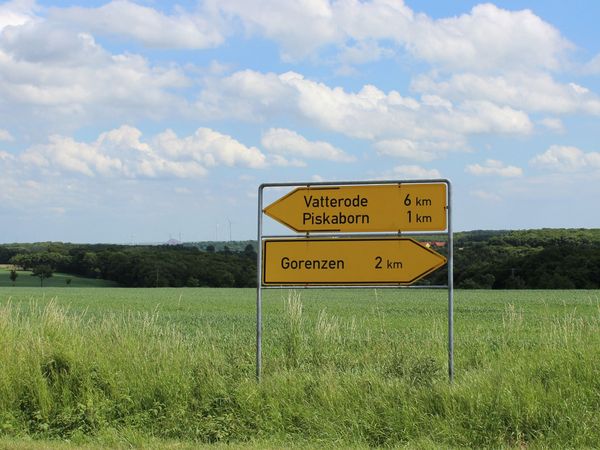Expertise
Municipal area reforms
Annett Steinführer | 11.05.2022
The territorial and, in particular, the municipal reforms of the past decades have fundamentally changed villages and small towns in rural areas. Thousands of villages and quite a few smaller towns have lost their political and administrative autonomy in the course of large-scale changes in their territorial status.

The territorial and, in particular, the municipal reforms of the past decades have fundamentally changed villages and small towns in rural areas. Thousands of villages and quite a few smaller towns have lost their political and administrative autonomy in the course of large-scale changes in their territorial status. A trained eye can still recognize this today on village entrance signs, and not only in rural areas. There, for example, one reads "Lehndorf, city of Braunschweig" or "Alleringersleben, municipality of Ingersleben" - Lehndorf in Lower Saxony was incorporated into the nearby large city as early as 1934, Alleringersleben as part of the last major territorial reform in Saxony-Anhalt in 2010. A (small) urban example is Heldrungen in Thuringia, which merged with five surrounding municipalities in 2019 to form the new small town of An der Schmücke. At the same time, new "cities" are also being created in this way - Hesse had already practiced this in the 1960s with Baunatal, for example, a merger of various villages under a new name.
The heyday of municipal area reforms in the old Federal Republic was in the late 1960s and the 1970s. Between 1961 and 1980, the number of municipalities in the eight Flächenländer fell by 65 percent (to about 8,500). In the GDR, the number of municipalities decreased by only 18 percent (to just over 7,500) during the same period. After reunification and in the wake of the paradigm of "catch-up" modernization applied to the eastern German states, the number of cities and municipalities in Brandenburg, Mecklenburg-Western Pomerania, Saxony, Saxony-Anhalt and Thuringia shrank by about 68 percent (to about 2,400) between 1990 and 2019. The territorial units created in this way vary greatly when comparing the federal states: for example, Saarland no longer has any cities and municipalities with fewer than 5,000 inhabitants - whereas in Rhineland-Palatinate and Mecklenburg-Western Pomerania, 71 and 67 percent of all cities and municipalities have fewer than 1,000 inhabitants, respectively (as of 2019).
Justifications for territorial reforms at the municipal and district level were and still are often given in terms of improving municipal performance and professionalizing municipal administrations, which is necessary in view of social and technological change. Financial arguments are also put forward. In addition, the distribution of tasks between the various levels of government is shifting or the tasks themselves are changing. As a result, their fulfillment must be renegotiated again and again. For this reason, there is frequent talk in the academic debate of "functional and territorial reforms". Criticism comes from civil society, among others, but also from academia, which points to diminished opportunities for political and civic participation, among other things. Overall, there is a great need for research on the actual fiscal, infrastructural, social and political effects of these territorial and functional reforms.
Further literature (in German)
Blesse S, Rösel F (2017) Was bringen kommunale Gebietsreformen? Kausale Evidenz zu Hoffnungen, Risiken und alternativen Instrumenten. Perspektiven der Wirtschaftspolitik 18 (4), 307-324.
Bogumil J, Kuhlmann S (Hrsg.) (2010) Kommunale Aufgabenwahrnehmung im Wandel. Kommunalisierung, Regionalisierung und Territorialreform in Deutschland und Europa. Wiesbaden.
Mattern J (2020) Dörfer nach der Gebietsreform. Die Auswirkungen der kommunalen Neuordnung auf kleine Gemeinden in Bayern (1978 bis 2008). Regensburg.
Steinführer A (2021) Lässt sich die Zahl der Dörfer in Deutschland bestimmen? Von Definitionsbemühungen, Suchwegen und unterschiedlichen Befunden. Berichte über Landwirtschaft 99 (3), 1-26.






